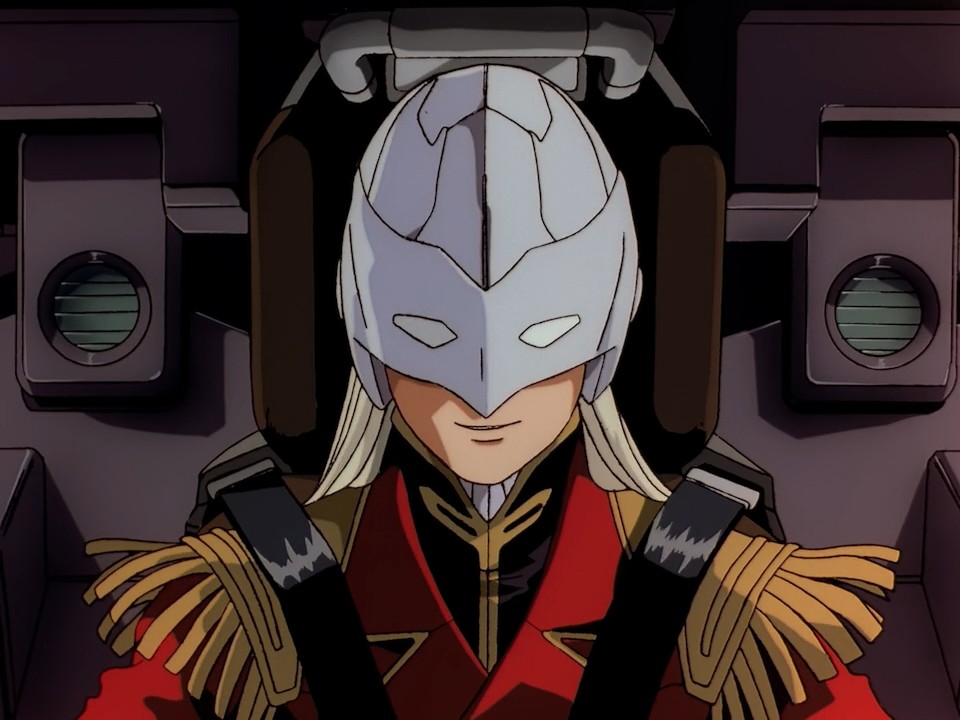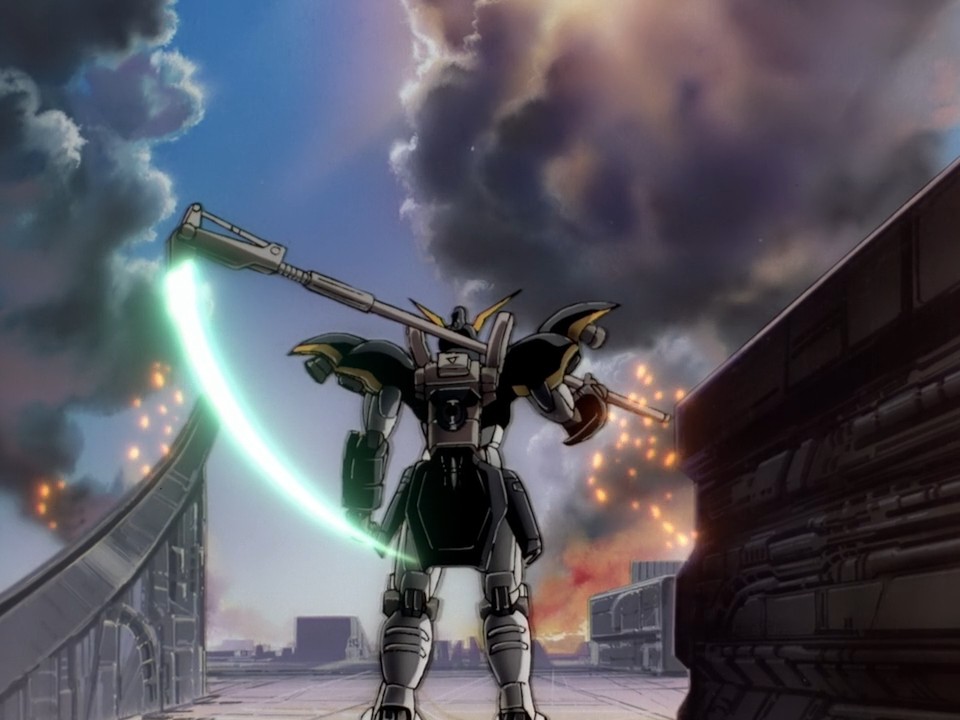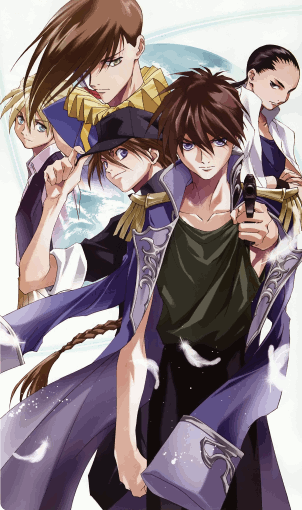Kill Your Nostalgia: Gundam Wing
By Mirado 0 Comments
Reposting this from the anime thread for posterity:
Step into a mental time machine and take yourself back to 1995 (or 2000 for us Americans) for the first installment of Kill Your Nostalgia!*
It's a small series (at least I plan on doing more than one, but resolutions are made to be broken) in which I'll review a show that's at least 10 years removed from when I last viewed it. That's a fairly small pool, mind you, but it does include some very popular titles (as it probably has to, since only the real money makers would cross the sea and wind up on television here) that you may remember fondly.
*You may not actually have any nostaglic feelings for any of these shows. Sorry. D:
First on the chopping block:
New Mobile Report Gundam Wing
(Yeah, that intro still does it for me.)
- Release Date: April 7th 1995 - March 29th, 1996 (Japan), March 6th - May 11th, 2000 (US)
- No. of Episodes - 49
- Last Seen: Original US release, 2000 ( TV: Toonami, dubbed)
- Rewatch Format: Subbed, to give it the best chance as the dub is "90s bad."
After seeing some Wing-related banter in the previous thread, I couldn't get this series out of my thoughts. It's a curious beast; I'd imagine it's probably the first proper mecha series I completed, but I remember very little of it outside of a few characters and some vague robot designs. In fact, the clearest memory I have revolves around how foggy the plot seemed at the time; words like Peacecraft or White Fang float around whenever I concentrate on Gundam Wing, but not in a way that leads to an identifiable group, or person, or motivation, or...anything. It's a big soup of terms and scenes; before I cracked open the first episode, I started to wonder if the complexity of this show was beyond what my younger self could handle, or if it really is a confusing, incomprehensible mess.

Gundam Wing revolves around five young pilots and their titular war machines, who land on Earth in an attempt to destroy OZ, a military organization with designs on subjugating the space colonies for the Romefeller Foundation, a secret organization of ultra rich people who pull the strings of various world governments. There's also the United Earth Sphere Alliance, and the Sanc Kingdom, and the World Nation, and a bunch of other random factions, reactionary movements, clans, and guerrilla operations, but nothing winds up mattering as main characters switch sides (and motivations) often enough that there's little point in keeping track of them all.
Eventually, even the show loses the will to keep things straight and stops bothering to explain why people are aligning with whatever flavor-of-the-month group they've chosen altogether. Let me give you an example of how dumb this all gets:
- After attacking the Alliance and showing their true allegiance to Romefeller, OZ splinters into two groups when Treize (the OZ leader) is removed from power by Duke Dermail, the head of Romefeller.
- This "Treize Faction" is eventually forced from the Earth into space, where they come into conflict with the remnants of the Alliance and the members of OZ who are slowly taking control of the colonies.
- With no indication at all, the Treize Faction and some remaining Alliance members join up with White Fang, a pro-colony group, despite the fact that they were just blowing each other up and never showed one iota of affiliation with the colonies. (Keep in mind, the whole show happens in the course of one year, so these battles are still very fresh.)
- Treize returns to power as the head of OZ/The World Nation/whatever the mishmash of forces from Earth now decide to call themselves, but instead of rejoicing and joining him, the members of White Fang originally from the Treize Faction decide to fight him to the death.
So, the plot is all over the place, motivations are vague or flexible enough to be considered a joke, people are knocked out of power only to have nearly identical organizations and characters fill the gap, and the show provides zero justification for slapping kids into the most advanced killing machines ever made. In fact, the show treats the Gundam pilots as adults in every conceivable way (down to their muted emotions and assumption of command), outside of the obligatory and oft-repeated shock when a random soldier discovers who they've been fighting.

The vast majority of the villains all suffer from anterograde amnesia, which manifests so frequently that I have to wonder if the writers intended to model the effects of traumatic brain injury after years of high G mobile suit maneuvers. Plans that fail are not only repeated mere episodes later, but with declarative statements that make most characters sound insane:
- "Send the mobile dolls, they're invincible!"
- *all the mobile dolls are destroyed*
- Next episode, same character: "Send the mobile dolls, they've never been beaten!"
Not a single person ever points out the absurdity of these statements or plans, but given the gleeful abandon in which most commanders throw their soldiers' lives/equipment away, I guess they're just happy to be out of the line of fire.
Now, asking a Gudam series to have a stellar plot is like asking a buffet to deliver a Michelin Star-winning level of cuisine; that'd be fantastic, but as long as you are full when you walk out, it did its job. So, let's get right to the main course; how's the robo fighin'?

When I think of giant robots, I think of these giant robots. Far more than any other show, the designs of these particular mecha perfectly encapsulate anime as a whole: stylish, unique, iconic, and utterly impractical. You need to keep in mind what the "shows with big fighting robots in them" landscape looked like for me back in the late 90s; I watched Power Rangers around 95-97, and compared to those lumbering, blocky slowpokes, these things looked like jet powered ballerinas with whole arms replaced by Gatling guns or beam canons that could blow up a moon. I remember feeling enraptured by the combat; things crumpled and disintegrated with such zeal and with such speed that I could scarcely keep up. I loved how diverse the designs were, how each had a different way of dealing with enemies, and it really was an eye opener; everything that came before felt like kids stuff, but this, this was for adults!
Well, time can act like a veil or it can act like a lens, and here it worked to focus on the shortcomings of a show from this era of animation. The designs remain varied and interesting, but that only helps to emphasize how often they were forced to reuse shots and sequences; designing unique and varied animations for six or seven main robots blowing up the same generic enemies was probably too much of a strain on both the budget and the deadlines, whereas a story based around a single protagonist could probably keep things from getting too repetitive over the course of a season.

Continuing with the "overuse" theme, the designs of the characters themselves are all pretty similar, with an emphasis on "pretty." I had to do some digging as I haven't seen many other mainline Gundams, but this one seems to be the first to go all bishōnen with it's character designs, and boy does it ever. The adults are mostly spared, but the Gundam pilots in particular are more or less interchangeably beautiful pretty boys, to the point that you really can't tell them apart, and it doesn't help that they're mostly emotionally mute, with the occasional breakdown as the only sign that they feel very much of anything. In a way, it makes sense; you'd have to be a fairly messed up kid to hop into one of these meat tenderizers and just start gunning down anything that moves, but despite having ample time to do so, the writes don't really bother to flesh out the backstories of the pilots or explain just how they became so outstanding at killing trained soldiers. There's hints of a mentor-student relationship with the Gundam designers, but, again, the show is frustratingly light on giving anyone more than surface level characterization.
And yet, it's not all doom and gloom for Gundam Wing. In fact, the one big complaint I've heard in the years since I first watched the show turned out not to bother me in the slightest; Heero Yuy really isn't all that bad. Oh sure, he can get a bit mopey and he's very one note (a low, resonating blast from a tuba), but compared to some of the real annoyances (looking at you, Lady Une), he's very inoffensive. In fact, watching this show made me realize how many whiny, "oh I'm not sure I can do this" Shinji Ikari clones are out there, and how I vastly prefer Heero's mute fatalism over even an ounce of the coming of age bullshit most of these shows try to shove down your throat.
(I'd go back and do one of these for Evangelion but I don't even have a scrap of nostalga for it, so it doesn't qualify.)
And when the show gets going, it still can grab your attention. The fights between main characters are well edited, and the animations can be fairly intricate when it isn't dealing with the umpteenth unit of cannon fodder. Space (the great matte painting money saver) can be a bit dull, but the combat on Earth benefits from various locations and environments, with urban spaceports, featureless deserts, lush jungles, and Antarctic research bases all making an appearance at one point or another.

The sound design is easily the best part of the show. I'd go so far as to say that Gundam is to anime sound design as Star Wars was to sci fi movie sound design, with the caveat that if a series did it before Gundam, I'm not aware of it. Everything is iconic, from the classic warning beep to something as simple as pulling a lever, and it all holds up far better than the animation or the nonsensical plot. I now understand why I never noticed how dumb this show can be: I was too busy emulating all of the cool noises coming out of my television to care.
So, does Gundam Wing stand the test of time? Well, no, but it doesn't suffer the kind of stock slide that I expected it to. Yes, the fights are far more underwhelming now that I notice just how much footage is recycled, and yes, the plot makes just as little sense as it did back then. But the high points that I remember (cool sounds, and the clashes between the important characters) are still fun, and the low points that I expected to hate (mainly Heero) didn't bother me nearly as much as I had assumed.
So, Gundam Wing's nostalga is dead, but not my love of its opening themes:
Never change, Two-Mix.

0 Comments